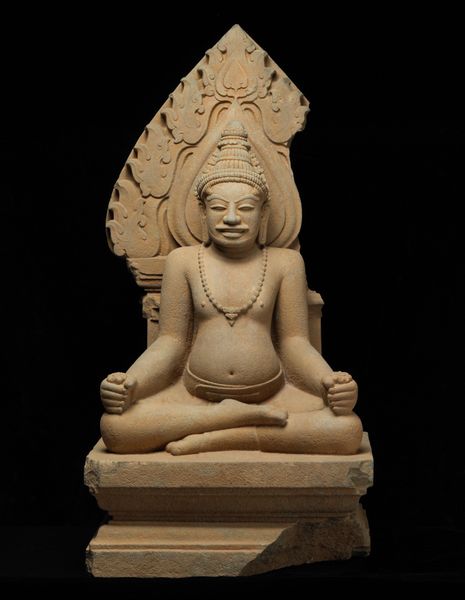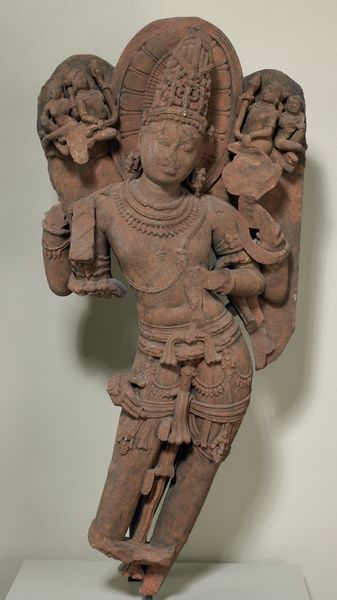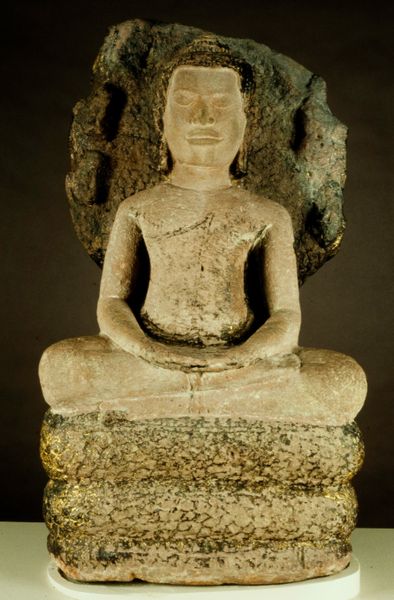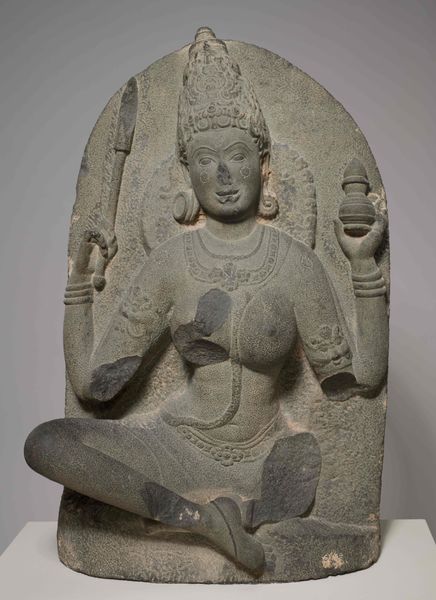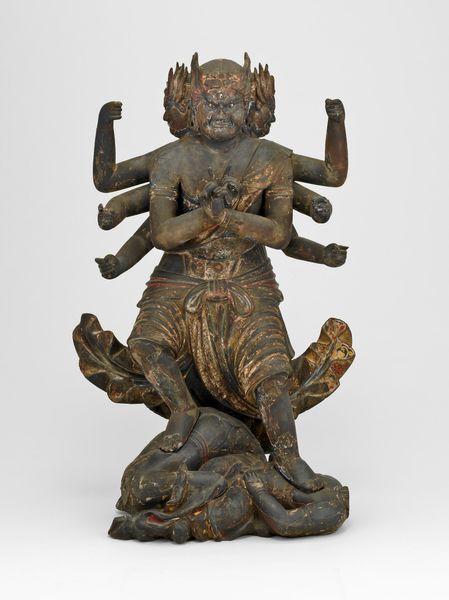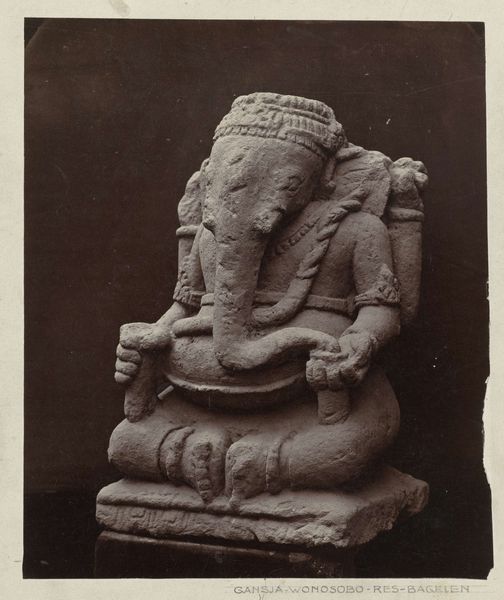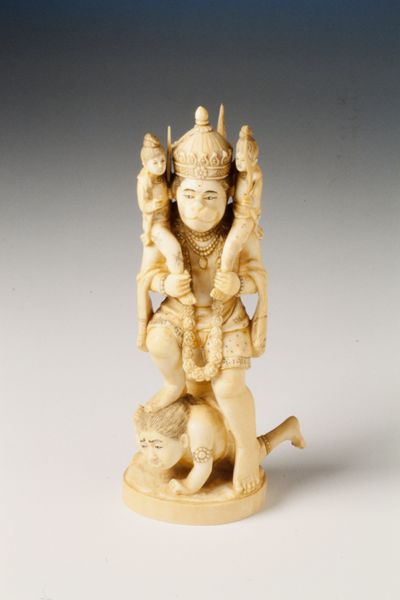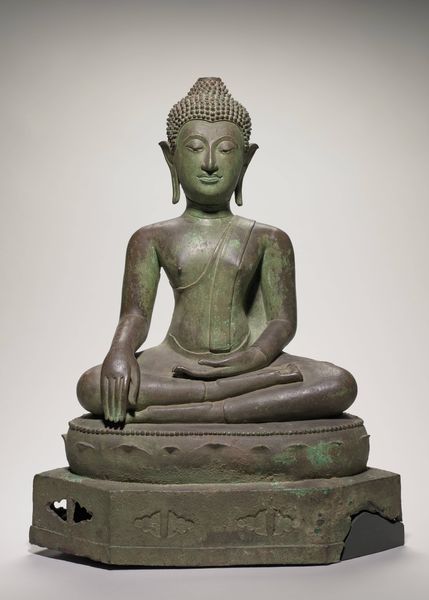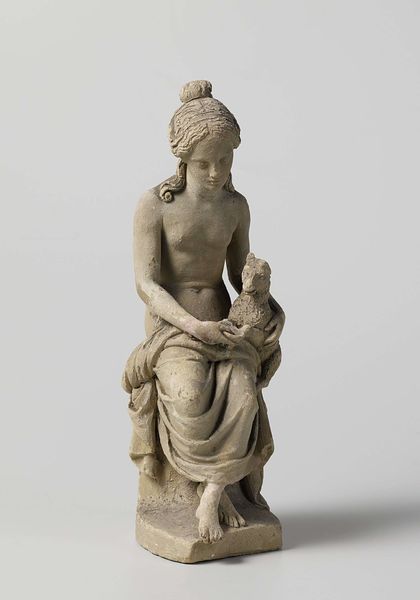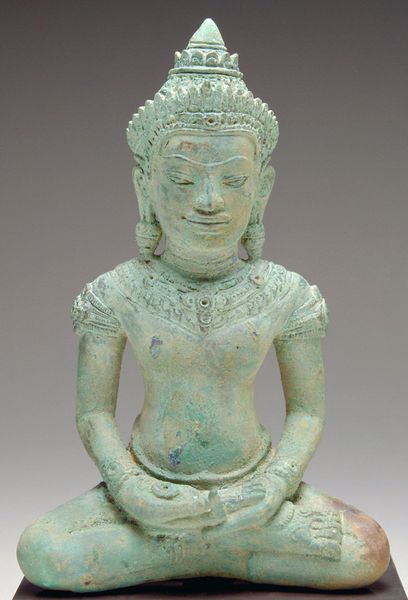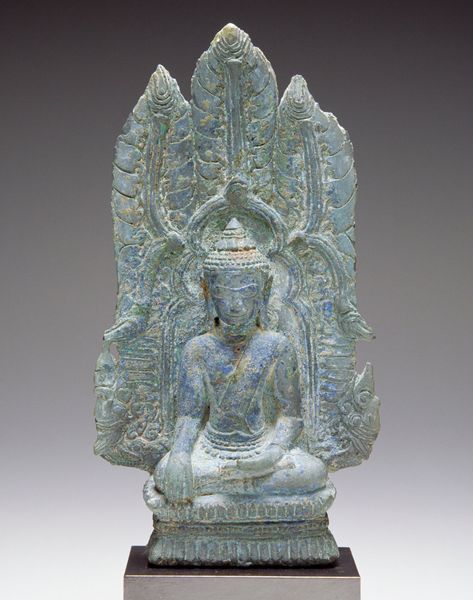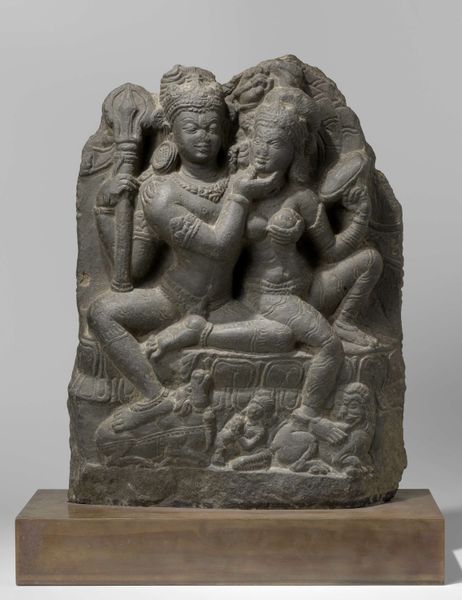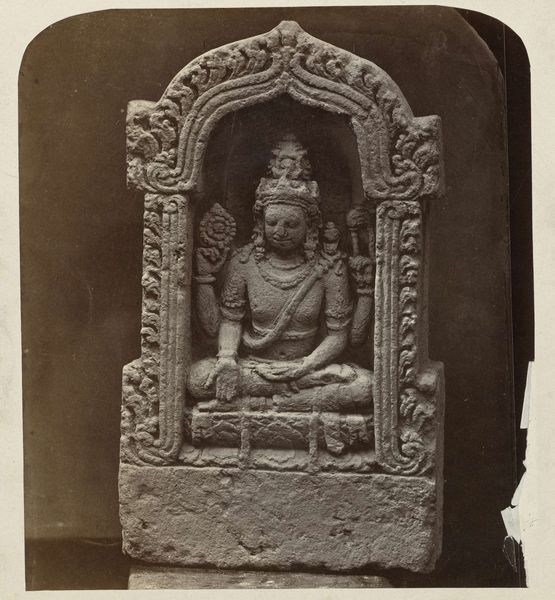
carving, sculpture
#
muted dark tone
#
carving
#
structure
#
stone
#
sculpture
#
sculptural image
#
figuration
#
unrealistic statue
#
carved into stone
#
sculpting
#
ancient-mediterranean
#
sculpture
#
ruin
#
statue
Dimensions: 35 3/4 × 21 1/4 × 7 3/4 in. (90.81 × 53.98 × 19.69 cm) (approx., without base)
Copyright: Public Domain
Curator: Looking at this sculpture, I immediately think about weight—both physical and symbolic. Editor: Indeed! This is Kubera, a sandstone carving dating back to around the 8th century. It's part of the Minneapolis Institute of Art's collection. Curator: The figure seems so grounded, doesn’t it? I imagine the sculptor carefully choosing this particular stone for its texture and color. What labor went into revealing Kubera from within? Editor: That’s a great question! Images like this served a crucial purpose, solidifying social hierarchies by visually representing wealth and power, after all, Kubera is the god of wealth! And consider who commissioned the carving, and where it was originally placed; likely a temple connected to the ruling dynasty. Curator: Right, power manifests not only in who is depicted, but also in the skill required to bring forth an image like this, a display of refined artistry that only some could access. I find it fascinating how the smooth planes of the body contrast with the intricate details in the headdress. It guides your eye around the form. Editor: Yes, it's intriguing how the public venerated and interacted with such images, understanding them not just as aesthetic objects but as potent symbols in a ritual context. Also consider that such a valuable stone was quarried, transported and carved reflects resources the commissioner was willing to use for social positioning and image construction. Curator: And what about its current home, in this museum? How does this new context shift the reading of the artwork from devotional object to art object? What value system has been placed on it today by housing it here, separate from the belief system which fueled its creation? Editor: Exactly, its reception is re-framed through institutional and aesthetic frameworks. Ultimately, art’s role isn't static; it morphs as societies evolve, and it serves as this enduring bridge that is a window into understanding past lives, both material and symbolic. Curator: So well said! I’m left contemplating the way artistic representation evolves through time and labor while material existence is perpetually woven through social existence.
Comments
minneapolisinstituteofart about 2 years ago
⋮
In early Indic religions, the pot-bellied Kubera was the king of semi-divine nature deities known as yakshas, protective spirits who guardedearthly treasures. By the 500s CE, the concept of Kubera, the god of wealth and abundance, was absorbed into Hindu, Jain, and Buddhist religious pantheons. In this sculpture, carved from a similar pinkish sandstone as the Mughal jali behind it, the deity holds in his left hand a cup for enjoying wine, and his now-missing left hand once held a sack of jewels. Befitting the god of riches, Kubera sits at ease, wearing elaborate ear ornaments and his sash relaxed, flanked by two female attendants fanning him with fly whisks.
Join the conversation
Join millions of artists and users on Artera today and experience the ultimate creative platform.
